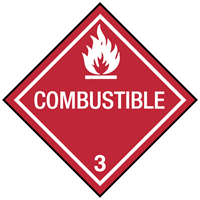
 Print
Print
Chemical Datasheet
ETHYL-3-ETHOXYPROPIONATE |

|
Chemical Identifiers
| CAS Number |
UN/NA Number |
DOT Hazard Label |
USCG CHRIS Code |
- 763-69-9

|
|
|
|
| NIOSH Pocket Guide |
International Chem Safety Card |
|
none
|
none
|
NFPA 704
data unavailable
General Description
Water-white liquid with an ester-like odor. Floats on water. (USCG, 1999)
Hazards
Reactivity Alerts
none
Air & Water Reactions
No rapid reaction with air. No rapid reaction with water.
Fire Hazard
Excerpt from 128

[Flammable Liquids (Water-Immiscible)]:
HIGHLY FLAMMABLE: Will be easily ignited by heat, sparks or flames. Vapors may form explosive mixtures with air. Vapors may travel to source of ignition and flash back. Most vapors are heavier than air. They will spread along the ground and collect in low or confined areas (sewers, basements, tanks, etc.). Vapor explosion hazard indoors, outdoors or in sewers. Those substances designated with a (P) may polymerize explosively when heated or involved in a fire. Runoff to sewer may create fire or explosion hazard. Containers may explode when heated. Many liquids will float on water. Substance may be transported hot. For hybrid vehicles, 147

(lithium ion batteries) or 138

(sodium batteries) should also be consulted. If molten aluminum is involved, refer to 169

. (ERG, 2020)
Health Hazard
Liquid or mist may irritate th eyes and skin. May cause headache, nausea and vomiting, central nervous system depression with dizziness, drowsiness and unconsciousness. (USCG, 1999)
Reactivity Profile
ETHYL-3-ETHOXYPROPIONATE is an ester. Esters react with acids to liberate heat along with alcohols and acids. Strong oxidizing acids may cause a vigorous reaction that is sufficiently exothermic to ignite the reaction products. Heat is also generated by the interaction of esters with caustic solutions. Flammable hydrogen is generated by mixing esters with alkali metals and hydrides.
Belongs to the Following Reactive Group(s)
- Esters, Sulfate Esters, Phosphate Esters, Thiophosphate Esters, and Borate Esters
- Ethers
Potentially Incompatible Absorbents
No information available.
Response Recommendations
Isolation and Evacuation
Excerpt from 128

[Flammable Liquids (Water-Immiscible)]:
IMMEDIATE PRECAUTIONARY MEASURE: Isolate spill or leak area for at least 50 meters (150 feet) in all directions.
LARGE SPILL: Consider initial downwind evacuation for at least 300 meters (1000 feet).
FIRE: If tank, rail car or tank truck is involved in a fire, ISOLATE for 800 meters (1/2 mile) in all directions; also, consider initial evacuation for 800 meters (1/2 mile) in all directions. (ERG, 2020)
Firefighting
Fire Extinguishing Agents Not to Be Used: Water may be ineffective.
Fire Extinguishing Agents: Water spray, dry chemical, carbon dioxide, or alcohol foam. (USCG, 1999)
Non-Fire Response
Excerpt from 128

[Flammable Liquids (Water-Immiscible)]:
ELIMINATE all ignition sources (no smoking, flares, sparks or flames) from immediate area. All equipment used when handling the product must be grounded. Do not touch or walk through spilled material. Stop leak if you can do it without risk. Prevent entry into waterways, sewers, basements or confined areas. A vapor-suppressing foam may be used to reduce vapors. Absorb or cover with dry earth, sand or other non-combustible material and transfer to containers. Use clean, non-sparking tools to collect absorbed material.
LARGE SPILL: Dike far ahead of liquid spill for later disposal. Water spray may reduce vapor, but may not prevent ignition in closed spaces. (ERG, 2020)
Protective Clothing
Rubber boots, rubber gloves, rubber apron, and self-contained breathing apparatus or a supplied air respirator. (USCG, 1999)
DuPont Tychem® Suit Fabrics
No information available.
First Aid
INHALATION: Call for medical aid. Remove the victim to fresh air. Give artificial respiration, if not breathing. Give oxygen if breathing difficult.
INGESTION: Do not induce vomiting. If spontaneous vomiting occurs keep victim's head below his hips to prevent his breathing the vomit.
EYES: Flush with lots of running water for 15 minutes, lifting the upper and lower eyelids occasionally.
SKIN: Remove contaminated clothing and shoes. Wash with plenty of soap and water. (USCG, 1999)
Physical Properties
Flash Point:
138°F
(USCG, 1999)
Lower Explosive Limit (LEL):
1.05 %
(USCG, 1999)
Upper Explosive Limit (UEL): data unavailable
Autoignition Temperature: data unavailable
Melting Point:
-148°F
(USCG, 1999)
Vapor Pressure: data unavailable
Vapor Density (Relative to Air): data unavailable
Specific Gravity:
0.95
(USCG, 1999)
- Less dense than water; will float
Boiling Point:
338°F
at 760 mmHg
(USCG, 1999)
Molecular Weight:
146.21
(USCG, 1999)
Water Solubility: data unavailable
Ionization Energy/Potential: data unavailable
IDLH: data unavailable
AEGLs (Acute Exposure Guideline Levels)
No AEGL information available.
ERPGs (Emergency Response Planning Guidelines)
No ERPG information available.
PACs (Protective Action Criteria)
| Chemical |
PAC-1 |
PAC-2 |
PAC-3 |
| Propionic acid, 3-ethoxy-, ethyl ester; (Ethyl-3-ethoxypropionate) (763-69-9)
|
1.6 ppm |
18 ppm |
110 ppm |
(DOE, 2018)
Regulatory Information
EPA Consolidated List of Lists
No regulatory information available.
CISA Chemical Facility Anti-Terrorism Standards (CFATS)
No regulatory information available.
OSHA Process Safety Management (PSM) Standard List
No regulatory information available.
Alternate Chemical Names
- ETHOXY PROPIONIC ACID, ETHYL ESTER
- ETHYL BETA-ETHOXYPROPIONATE
- ETHYL-3-ETHOXYPROPIONATE
- PROPIONIC ACID, 3-ETHOXYETHYL ESTER


 Print
Print
